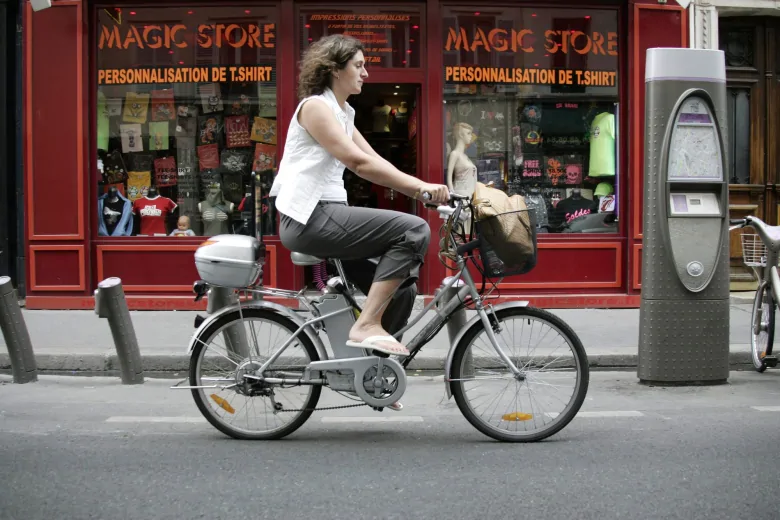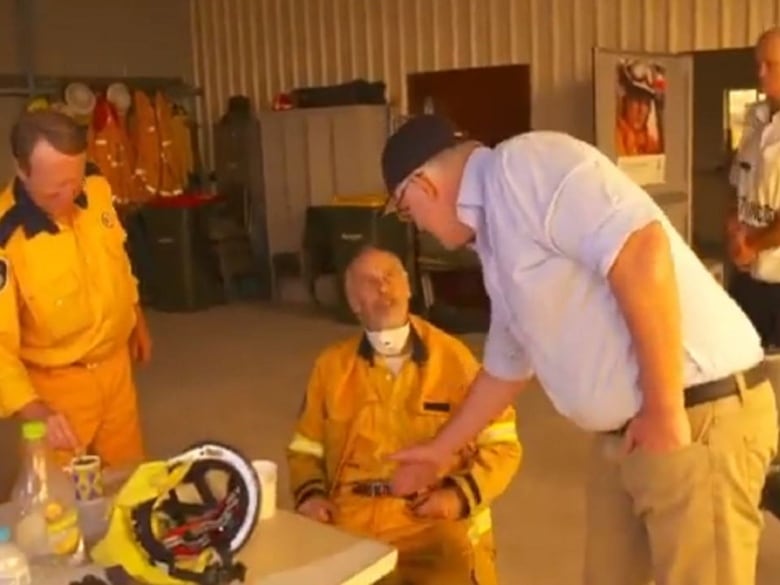E-bikes, not electric cars, may hold the key to greener transportation

Hello, people! This is our weekly newsletter on all things environmental, where we highlight trends and solutions that are moving us to a more sustainable world. (Sign up here to get it in your inbox every Thursday.)
This week:
- E-bikes, not electric cars, may hold the key to greener transit
- Wildfires aren’t the only thing heating up Australia
- Algae: Carbon capture of a different sort
E-bikes, not electric cars, may hold the key to greener transportation
Gregor Macdonald, a Portland, Ore.-based journalist and author of the ebook Oil Fall, has been chronicling the way electric cars have been disrupting the petroleum industry, which of course relies heavily on people driving gasoline-powered vehicles.
But Macdonald admits he slept on a development that might have an equally significant effect on oil demand and, consequently, carbon emissions.
“I consider myself to be someone who’s very on top of these trends, and I have nearly missed the e-bike explosion because it’s happening so fast,” said Macdonald. “It’s blown up in the last 12 to 18 months.”
Suffice to say Macdonald is now up to speed on the e-bike surge. These devices — which still have pedals, but also contain a rechargeable battery and can hit speeds of 25 km/h — have seen tremendous growth in recent years. In a report released in December, market research firm Deloitte said it expected global sales of 130 million e-bikes between now and 2023.
That outlook is a lot more bullish than the one for electric cars. For example, Bloomberg New Energy Finance, whose projections are generally seen as more optimistic than those of other research firms, sees the number of electric cars worldwide hitting the 130 million mark closer to 2030.
Electric cars have long been viewed as the most effective way to decarbonize the transportation sector, but Macdonald believes people are waking up to the benefits of a smaller, stealthier ride. For one thing, they’re cheaper: Whereas the lowest-priced electric car is about $30,000, a new e-bike is in the $1,000-$5,000 range.
Macdonald said a typical adult rider can get a range of about 30-40 kilometres on a single charge, which makes e-bikes well-suited to the average daily commute (provided the weather is nice). If you get a slightly larger e-bike with a bit of storage, you can transport your groceries and even other people.
“It’s not that [e-bikes are] going to replace cars wholesale, but they’re going to replace trips made by cars,” said Macdonald. “A $3,500 [US] e-bike is going to allow many families to think about going from two cars to one car.”
Another reason e-bikes are gaining traction is that many people have abandoned the notion that bikes are purely meant for exercise, said Darnel Harris, executive director of Our Greenway, a Toronto-based mobility advocacy group.
“As much as we talk about health and the importance of health, society-wise … we gravitate towards a comfortable ride that’s safe and practical,” he said. In the past, the default solution would have been a car. But e-bikes provide another option to get around without breaking a sweat.
While some people have expressed concern that the rise of e-bikes and other modes of low-speed transport are making bike lanes more crowded and precarious, Harris said it really comes down to how they are regulated.
Not surprisingly, the Scandinavians have something to teach us. Harris said bike lanes in the Netherlands are built for “more than 20 different devices,” including bikes, scooters and even a wheelchair-friendly vehicle that looks like a Smart Car.
Harris said the key is recognizing that “we shouldn’t really be building bike lanes. We should be building mobility lanes for different types of low-speed devices — which the Dutch have done for decades.”
— Andre Mayer
Reader feedback
We asked for New Year’s resolutions, and you delivered. Here are a few of your responses.
Harriet Woodside wrote that she was “tired of feeling there is very little I can do as one person to turn climate change around.” This is what she’s proposing for the new year: “My New Year’s resolution is to have 52 meatless Mondays in 2020. Every day I don’t eat meat is equivalent to taking my car off the road for at least 10 kilometres. Do the math. If just 1,000 Canadians skip meat on one Monday, that equals 10,000 kilometres not driven.”
Christopher Burford: “I will reduce my plastic and meat consumption. I will pay more attention to my consumer behaviours and take the more environmental options, when possible. I’ll reuse those clear, thin plastic produce bags until I find a better option. I’ll bring jars to bulk stores instead of buying prepackaged food/household products.” In short, he said, “I will recognize that in enjoying a luxury today, I may in fact be taxing our future.”
Josée Joliat wrote, “I’m not sure what my 2020 New Year’s resolution will be,” but she said that in the past year, “it was to make as many greener switches as possible in my daily routine.” Joliat said that she has slowly “switched over most of my hygiene products (shampoo, conditioner, eye makeup remover), my cleaning products (dish, laundry and household cleaners) and now look forward to my weekly grocery shopping at Bulk Barn! My partner and I also now have a vermicompost and have only bought second-hand furniture to help furnish our new home.”
Old issues of What on Earth? are right here.
The Big Picture: Australia’s prime minister under fire
The world has been transfixed with the apocalyptic scenes in Australia, where wildfires have raged for several months, burning more than six million hectares and leading to 24 deaths (by last count) and an estimated billion animal deaths. Climate change isn’t necessarily responsible for wildfires, but it certainly makes them worse. If Australia’s landscape is taking a beating, so is the country’s prime minister, Scott Morrison. After being criticized for holidaying in Hawaii while fires raged at home, Morrison recently took a tour of some of the affected regions. The reception, in many instances, was quite tense. Many Australians are upset by Morrison’s dismissive attitude to climate change, as well as the government’s decision to reduce funding for firefighters. This has led to encounters like the one pictured below, captured by Australian television, where a weary firefighter refused to shake Morrison’s hand.

Hot and bothered: Provocative ideas from around the web
Algae: Carbon capture of a different sort

Think algae is just that stinky gunk that litters some shorelines?
It’s so much more, according to Steve Martin, CEO of Pond Technologies, who describes himself as the “guy who has the crazy idea that we can grow algae off of the industrial emissions and help to save the world.”
For about a year, Martin and a small crew have been running a demonstration algae plant out of a small tent at his company’s cement factory in St. Marys, Ont., about 170 kilometres west of Toronto. He pointed out that cement is the most manufactured product in the world, used to build things like hydroelectric dams.
“We see a smokestack and we say, ‘Look, that’s evil, that’s got to go,'” Martin said. “For a tonne of cement, you make a tonne of carbon dioxide. So we need to find a way to use that, and luckily, nature has provided algae.”
Pipes from the smokestacks at the cement plant run to Pond’s tent, transporting CO2 into a giant, 22,000-litre tank known as a bioreactor. The algae then does what it does best, according to project manager Tim Everett: It gobbles up the CO2.
The result is about 20 kilograms of a thick green paste produced daily. “It really is almost a limitless byproduct,” said Everett, a mechanical engineer.
The team then uses that paste to cook up a series of green superfoods, including chlorella and spirulina, as well as feed for farm animals.
Martin admitted the technology isn’t new, and Pond Technologies isn’t the only one doing it. But he thinks their methods are the most advanced, and he’s hoping to make a serious dent in carbon emissions.
“The potential is enormous,” he said. “If we put this technology on just 10 per cent of the industrial emitters in North America, we are a long way to meeting the goals of CO2 reduction.”
Still, some say the technology is expensive and its use limited.
“It’s kind of like using a mop to clean up water on the floor while the tap is still running. We need to be thinking of ways to turn off that tap,” said Sarah Buchanan with Environmental Defence, a watchdog group based in Toronto.
She said carbon removal technologies are helpful in a limited way, but the focus should be on clean alternatives that can produce energy without any carbon pollution. “The only silver bullet solution, really, is we have to stop burning fossil fuels. There’s a lot of great renewable clean technologies that can help us do that.”
Martin agrees, but he believes his project can play a vital role.
“I would say it’s not an a la carte menu, it’s a buffet,” he said. “We have to do it all.”
— Shannon Martin
Stay in touch!
Are there issues you’d like us to cover? Questions you want answered? Do you just want to share a kind word? We’d love to hear from you. Email us at whatonearth@cbc.ca.
Sign up here to get What on Earth? in your inbox every Thursday.
Editor: Andre Mayer | Logo design: Sködt McNalty





